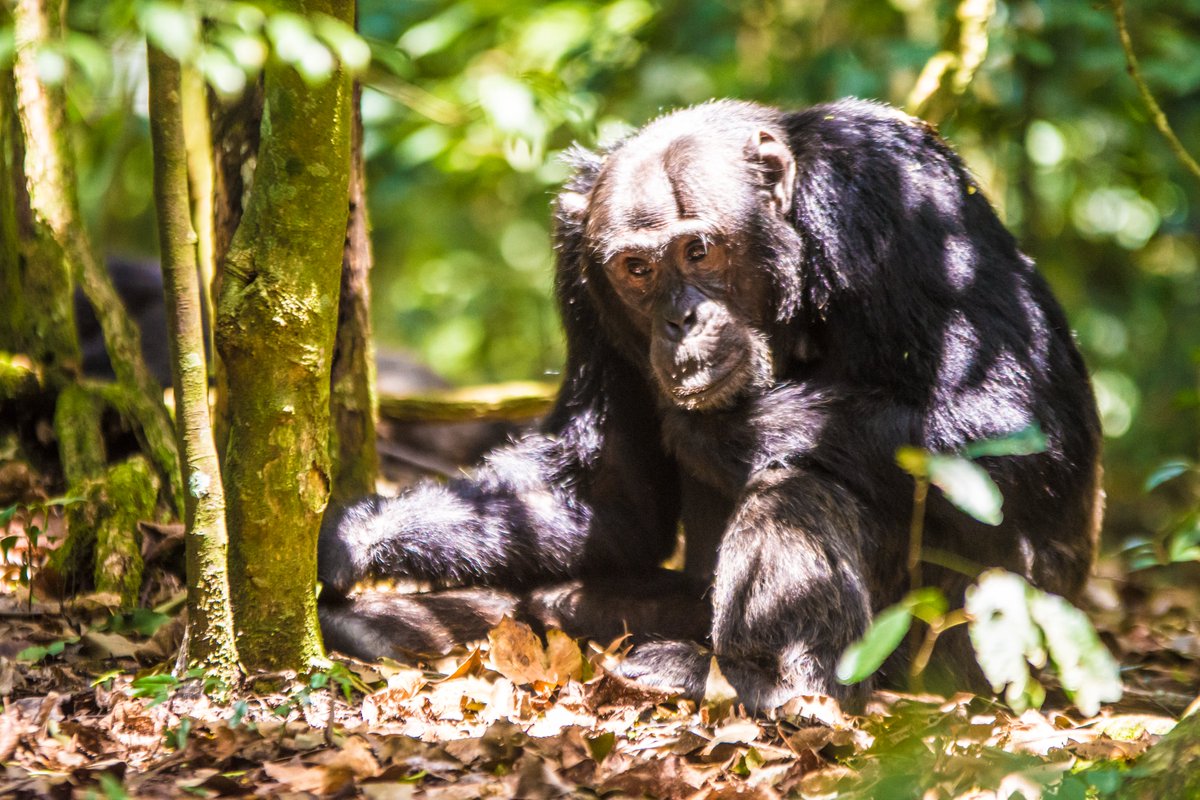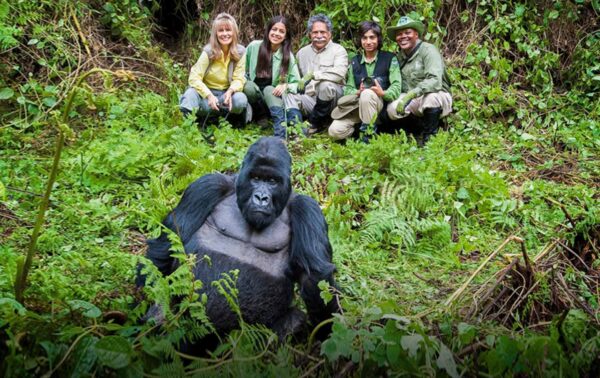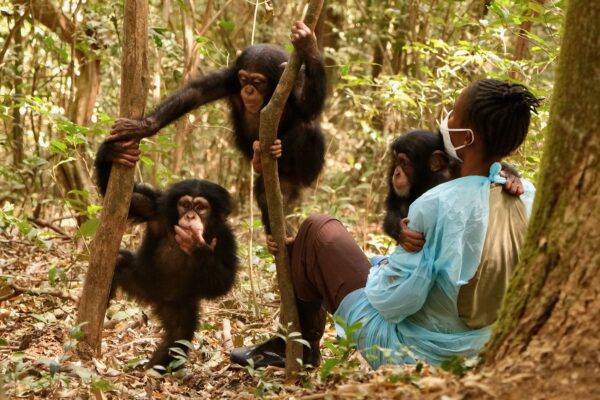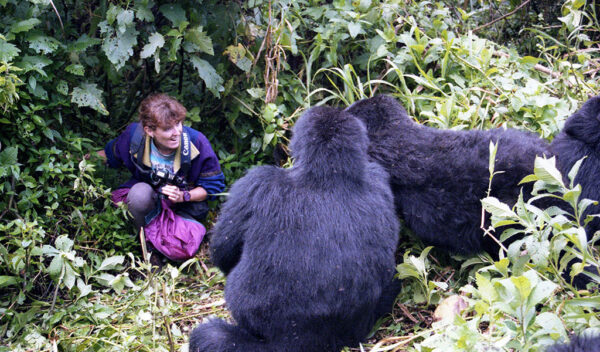
How Many People Are Allowed Per Walking Safari Group?
November 20, 2025
How Many Gorilla Families Can Visitors Track in Bwindi Impenetrable Forest?
November 20, 2025How Many People Are Allowed Per Chimpanzee Tracking Group?
When travelers ask, “How many people are allowed per chimpanzee tracking group?”, they are seeking to understand both the logistics and the quality of experience on a Uganda Chimpanzee Safari. Kibale Forest National Park, often referred to as the “Primate Capital of Africa,” is home to over 1,500 chimpanzees and several other primate species. To ensure minimal disturbance to wildlife and maximum enjoyment for visitors, the Uganda Wildlife Authority (UWA) carefully regulates group sizes during tracking. This question highlights a critical aspect of Uganda Safaris, as smaller groups provide more intimate encounters, better photography opportunities, and deeper educational engagement.
Introduction: Understanding Group Sizes for Chimpanzee Tracking
Renai Safaris emphasizes that knowing “How many people are allowed per chimpanzee tracking group?” also influences the overall safari itinerary. Smaller groups, usually capped at six to eight individuals per ranger, allow for personalized guidance while walking through the forest. The experience becomes more than a simple wildlife sighting—it evolves into an immersive exploration of the chimpanzees’ natural behaviors, their social interactions, and the forest ecosystem itself. Many travelers combine chimpanzee tracking with Uganda Gorilla Trekking Safaris, creating multi-dimensional trips that showcase Uganda’s diverse primate populations and highlight the best of Uganda Best Safaris.
Why Group Size Matters in Chimpanzee Tracking
Asking “How many people are allowed per chimpanzee tracking group?” is not just a question of numbers—it is also about quality of experience and conservation. Kibale Forest is a delicate ecosystem where too many humans in one group can disturb chimpanzees and alter their natural behaviors. Renai Safaris ensures that travelers understand that smaller groups enhance wildlife observation while maintaining the forest’s integrity. Typically, each group consists of a maximum of six to eight participants, accompanied by an experienced ranger who leads the trek, provides expert insights, and ensures safety.
Smaller groups also improve the chances of observing elusive chimpanzee families without causing stress or disruption. For visitors on Uganda Chimpanzee Safaris, this means a more engaging and educational adventure. It allows travelers to watch chimps interact naturally, feed, and even play with each other. Furthermore, combining chimpanzee tracking with Uganda Gorilla Trekking Safaris ensures that participants experience both forest primates and mountain gorillas in an ethically managed environment. By understanding “How many people are allowed per chimpanzee tracking group?”, travelers can better plan their safari, choosing operators like Renai Safaris who prioritize sustainability, safety, and exceptional wildlife encounters.
The Benefits of Small Group Chimpanzee Tracking
When visitors inquire, “How many people are allowed per chimpanzee tracking group?”, they are often seeking a more personalized safari experience. Small groups offer several benefits beyond ethical wildlife viewing. They allow rangers to tailor explanations to the interests of participants, whether that includes primate behavior, forest ecology, or bird identification during a Uganda Birding Safari. Smaller groups also reduce environmental impact, ensuring that trails remain intact and that animals are minimally stressed.
Renai Safaris integrates small-group trekking into broader Uganda Safaris packages that often include Uganda Cultural Safaris. Travelers may combine chimpanzee tracking with visits to local communities, where they can learn traditional forest-use practices, engage with the Batwa pygmies, or participate in conservation programs. By asking “How many people are allowed per chimpanzee tracking group?”, travelers gain insight into the planning, care, and expertise required to make a chimpanzee trek meaningful. Pairing these experiences with Uganda Gorilla Trekking Safaris or Uganda Wildlife Safaris ensures a comprehensive, world-class safari that balances adventure, learning, and cultural immersion.
Combining Chimpanzee Tracking with Gorilla Trekking
Many travelers are curious, “How many people are allowed per chimpanzee tracking group?”, while also considering the possibility of combining their chimpanzee adventure with gorilla trekking. Renai Safaris highlights that pairing Uganda Chimpanzee Safaris with Uganda Gorilla Trekking Safaris offers one of the most rewarding East African safari experiences. After an early morning trek in Kibale Forest with a small group, travelers can continue to Bwindi Impenetrable Forest to encounter mountain gorillas in their natural habitat.
The small-group approach ensures that both chimpanzee and gorilla experiences are intimate and well-managed. This allows travelers to witness subtle behaviors, capture quality photographs, and gain deeper knowledge from expert guides. Asking “How many people are allowed per chimpanzee tracking group?” is thus an essential consideration when planning multi-experience itineraries. By keeping groups small, Renai Safaris provides a level of service, expertise, and environmental stewardship that elevates Uganda Best Safaris, positioning Uganda as a global leader in ethical and immersive wildlife tourism.
Cultural Experiences Around Kibale Forest
A question often connected to “How many people are allowed per chimpanzee tracking group?” is how to integrate cultural experiences into the chimpanzee safari. Kibale Forest is surrounded by vibrant communities with rich traditions, particularly the Bakiga and Batwa pygmies, who have long-standing knowledge of forest ecology. Visitors on Uganda Cultural Safaris can experience traditional dances, participate in local crafts, or learn about indigenous conservation practices that protect chimpanzee habitats.
Renai Safaris emphasizes that small-group trekking enhances these cultural interactions. With fewer people in the forest, there is more time and space to engage meaningfully with guides and communities, creating a holistic safari experience. Combining chimpanzee tracking with Uganda Gorilla Trekking Safaris or Uganda Birding Safaris allows travelers to experience Uganda’s biodiversity alongside its rich cultural heritage. By asking “How many people are allowed per chimpanzee tracking group?”, travelers discover that the answer is about more than numbers—it is about creating quality, immersive experiences that balance wildlife, culture, and conservation.
Enhancing Wildlife Observation in Small Groups
Travelers often ask, “How many people are allowed per chimpanzee tracking group?”, because they want to maximize wildlife observation. Smaller groups allow participants to approach chimpanzees at a safe, respectful distance while receiving personalized guidance from expert rangers. Observing chimpanzee families in their natural environment becomes easier and more informative when fewer people are present. The group size ensures minimal noise, reduced stress on the animals, and a better chance to witness natural behaviors such as feeding, grooming, and social interactions.
Renai Safaris ensures that small-group experiences integrate seamlessly with other Uganda Wildlife Safaris. After observing chimpanzees, travelers can continue to nearby reserves for game drives, birding excursions, or even primate tracking in Budongo Forest. Asking “How many people are allowed per chimpanzee tracking group?” allows travelers to plan itineraries that maximize wildlife exposure, photography opportunities, and conservation learning. When combined with Uganda Gorilla Trekking Safaris, this approach provides one of the most comprehensive, ethical, and engaging safari experiences in East Africa.
Planning Your Chimpanzee Safari with Renai Safaris
Answering “How many people are allowed per chimpanzee tracking group?” is an essential step in planning a successful Uganda safari. Renai Safaris provides tailored itineraries, including park permits, experienced guides, transportation, accommodation, and optional extensions to gorilla trekking, birding, or wildlife safaris. This ensures that travelers enjoy small-group experiences without compromising comfort or safety.
Careful planning also ensures optimal timing. Early morning treks often increase the likelihood of chimpanzee sightings, while small groups allow participants to enjoy these moments at a slower pace. By asking “How many people are allowed per chimpanzee tracking group?”, travelers understand the importance of personalized guidance and expert-led tours. Combining chimpanzee tracking with Uganda Gorilla Trekking Safaris, Uganda Cultural Safaris, and Uganda Birding Safaris creates a well-rounded adventure that showcases Uganda’s biodiversity, culture, and conservation initiatives, establishing Renai Safaris as a reliable and authoritative guide for world-class safari experiences.
Conservation and Ethical Tourism Considerations
Many visitors ask, “How many people are allowed per chimpanzee tracking group?”, because they are also concerned about conservation and responsible tourism. Small groups are a key factor in ensuring that chimpanzees are minimally disturbed, their habitat remains intact, and human-wildlife interactions are sustainable. Renai Safaris follows strict guidelines set by the Uganda Wildlife Authority to maintain ethical and safe trekking conditions.
Smaller groups also support community engagement and conservation initiatives. Fees from chimpanzee tracking permits fund forest protection and local development projects, ensuring that tourism benefits both wildlife and people. Combining small-group chimpanzee trekking with Uganda Gorilla Trekking Safaris, Uganda Birding Safaris, and Uganda Cultural Safaris allows travelers to experience Uganda holistically while contributing positively to conservation efforts. By asking “How many people are allowed per chimpanzee tracking group?”, visitors understand that group size is critical for both ethical tourism and quality safari experiences.
Enhancing the Overall Uganda Safari Experience
Answering “How many people are allowed per chimpanzee tracking group?” goes beyond logistics—it shapes the entire Uganda safari experience. Renai Safaris emphasizes that small groups allow travelers to connect deeply with wildlife, gain personalized insights from expert guides, and enjoy immersive forest experiences. This intimate approach enhances the quality of Uganda Chimpanzee Safaris while complementing Uganda Gorilla Trekking Safaris, wildlife safaris, birding, and cultural excursions.
Small-group chimpanzee tracking ensures that each participant can experience Uganda’s rich biodiversity in a safe, ethical, and memorable way. Travelers gain a comprehensive understanding of forest ecosystems, primate behavior, and local culture. By integrating Uganda Birding Safaris, Uganda Cultural Safaris, and Uganda Wildlife Safaris into small-group trekking, Renai Safaris creates a complete adventure that exemplifies excellence, expertise, and trustworthiness in Africa tourism. Asking “How many people are allowed per chimpanzee tracking group?” ultimately ensures a safari that is educational, ethical, and unforgettable.





